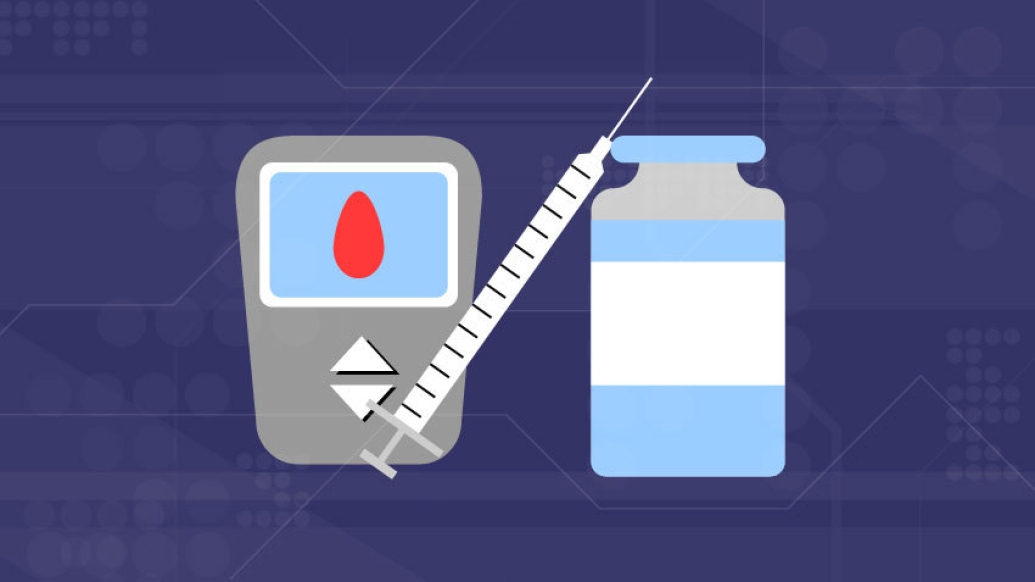While insulin comprises a big part of diabetes expenses for children and adults, diabetes-related supplies can cost even more.
10:08 AM
Author |

Adults and children with type 1 diabetes will spend an average of $2,500 a year out-of-pocket for health care – but insulin isn't always the biggest expense – new research suggests.
While out-of-pocket costs for insulin was substantial, it accounted for just 18% of total out-of-pocket expenses for health care, according to the findings in JAMA Internal Medicine.
In fact, insulin accounted for less out-of-pocket spending than diabetes-related supplies, such as insulin pumps, syringes and continuous glucose monitors.
"Insulin is the difference between life and death for patients with type 1 diabetes, and efforts to make it more affordable are critical," says lead author Kao-Ping Chua, M.D., Ph.D., a pediatrician and researcher at Michigan Medicine's C.S. Mott Children's Hospital and the Susan B. Meister Child Health Evaluation and Research Center.
"However, our study shows that even if insulin were free, families would still have substantial out-of-pocket costs for other health care. Policymakers should improve the affordability of all care for type 1 diabetes."
Eight percent of patients in the study spent at least double the average with more than $5,000 in out-of-pocket costs, possibly because they were enrolled in high deductible health plans or had particularly great health needs, authors say.
Families of children spent the most on diabetes-related supplies, with annual out-of-pocket costs averaging $823 for pediatric patients compared to $445 for adult patients. The study found that 4 in 5 children used insulin pumps, continuous glucose monitors, or both, compared with just over half of adults.
"These technologies can improve quality of life and improve diabetes control for all patients, but can be especially important to the families of children with type 1 diabetes," Chua says.
Chua notes that many adults are comfortable checking their glucose and injecting insulin manually. But for young children who may be leery of needles or adolescents who forget to take insulin, automating the process of glucose monitoring and insulin delivery can be particularly beneficial for diabetes management.
Diabetes devices have been proven to improve diabetes control and reduce risks of hypoglycemia – a condition in which blood glucose drops dangerously low.
Removing barriers to high-value care
The Michigan-led study is based on national data of 65,199 patients ages 1-64 in 2018 who received private employer-sponsored insurance coverage. This included 7,842 children. The dataset did not include patients covered by Medicare or Medicaid or those without insurance.
Our study shows that even if insulin were free, families would still have substantial out-of-pocket costs for other health care. Policymakers should improve the affordability of all care for type 1 diabetes.Kao-Ping Chua M.D., PhD
Chua says the study's findings are particularly timely given recent efforts to cap out-of-pocket costs for insulin. Several states and insurers imposed monthly caps on these costs earlier in 2020. The Centers for Medicare and Medicaid Services just announced that many elderly Medicare beneficiaries will soon pay no more than $35 for a one-month supply of insulin.
"These are important first steps," says Chua. "But policymakers also must look at the bigger picture and ensure that they are reducing the financial burden of health care for diabetes patients more broadly."
One way to do this, says Chua, is to follow the example of a 2019 IRS rule that allows patients in high deductible health plans to receive coverage for insulin, diabetes testing, and glucometers before deductibles are met. He believes this policy should be extended to all plans and to more services.
"It's crucial to remove barriers to accessing high value care that improves outcomes," Chua says.
Health care affordability for patients with type 1 diabetes is especially concerning, because of economic hardships from the COVID-19 pandemic, Chua says.
"Many people with private insurance have lost their jobs and insurance coverage," he says. "This may put health care like insulin and diabetes-related supplies out of reach."
Paper cited: "Out-of-Pocket Spending for Insulin, Diabetes-Related Supplies, and Other Health Care Services Among Privately Insured US Patients With Type 1 Diabetes," JAMA Internal Med. DOI: 10.1001/jamainternmed.2020.1308

Explore a variety of health care news & stories by visiting the Health Lab home page for more articles.

Department of Communication at Michigan Medicine
Want top health & research news weekly? Sign up for Health Lab’s newsletters today!





